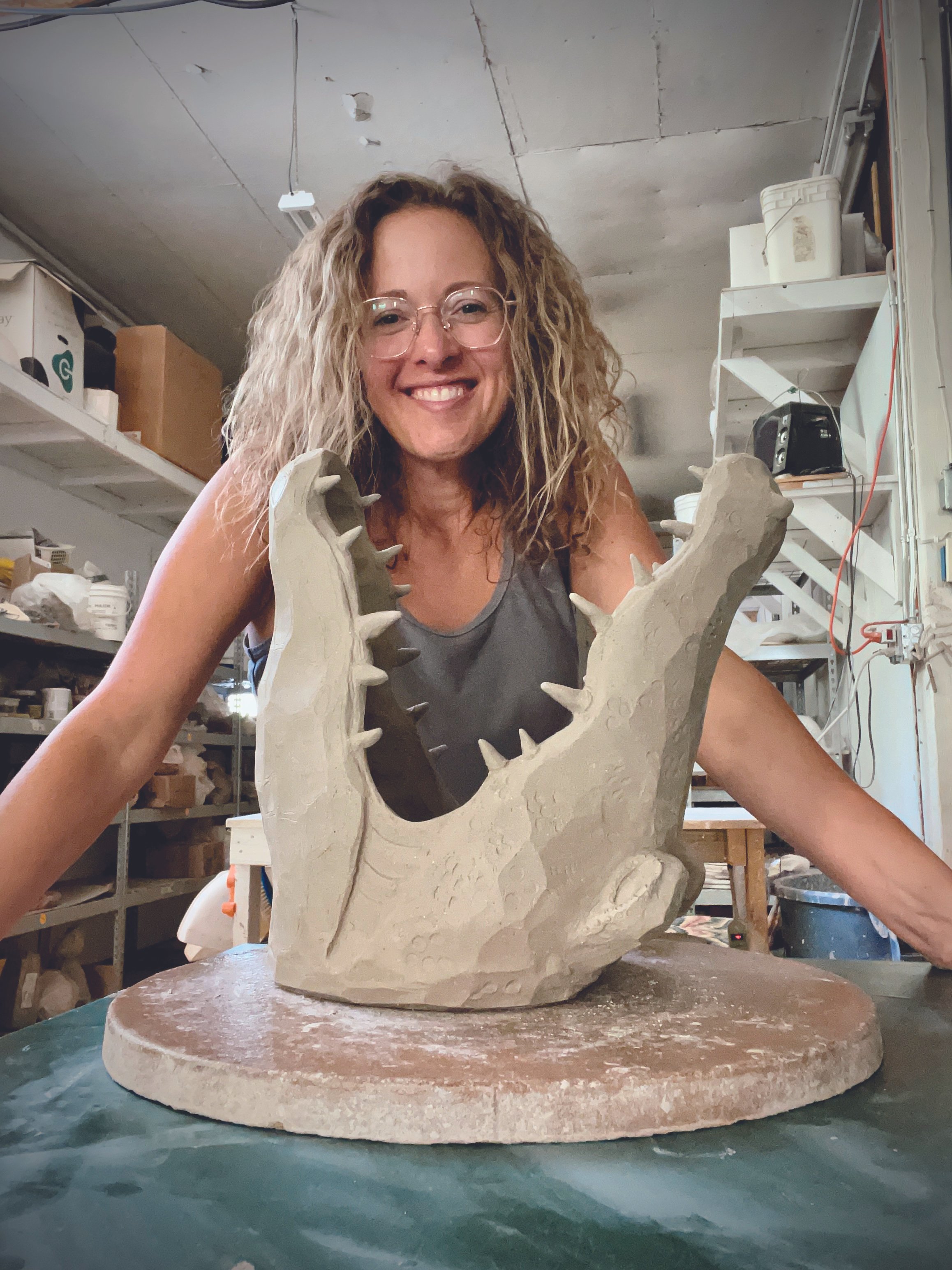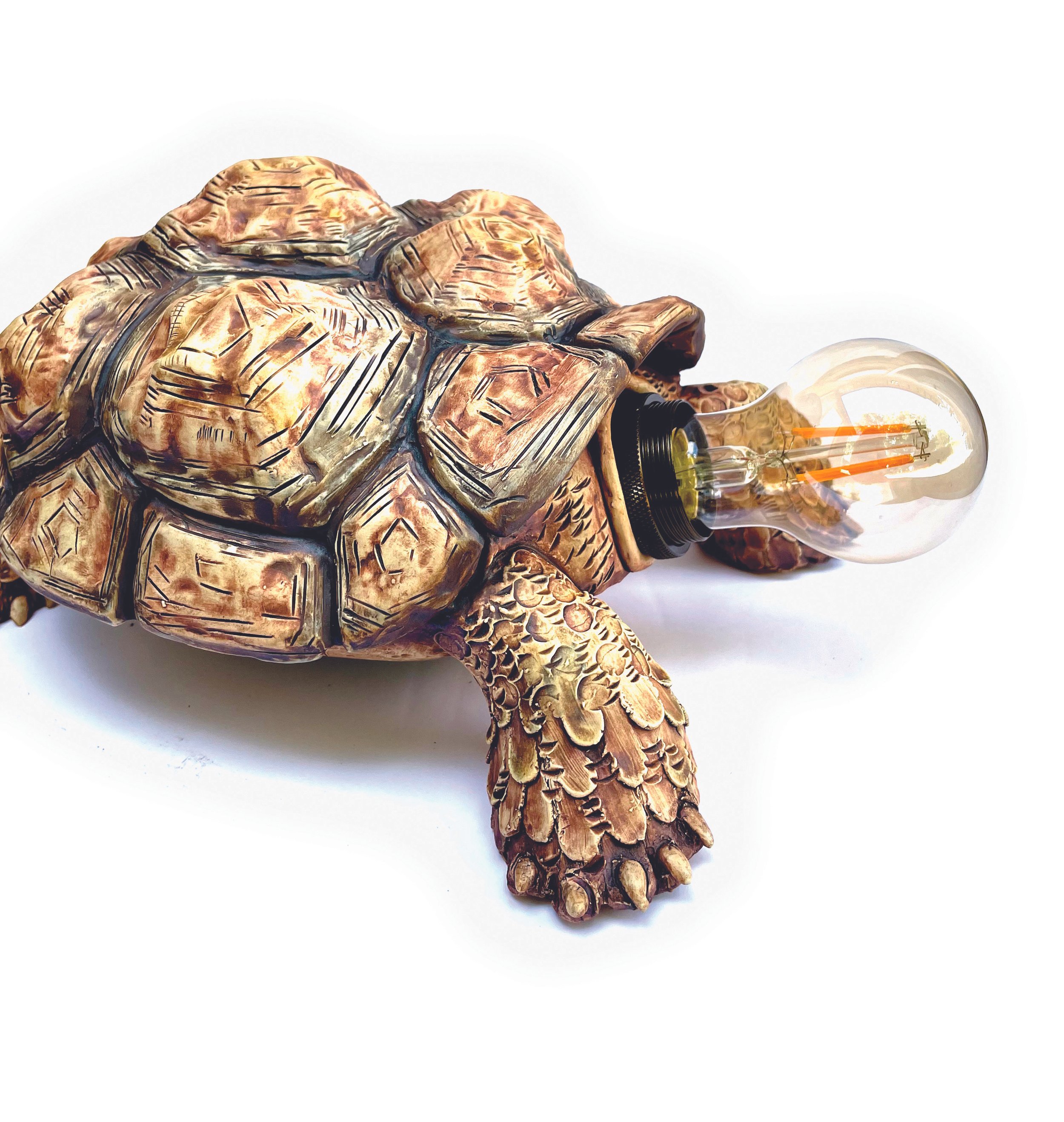Crafting Culinary + Artistic Odes To Nature's Overlooked Whimsies: Abbey Andersen
Abbey Andersen has made a life out of following her nose and tastebuds. Her education is in studio art and creative writing, but her favorite medium is food — farms, foraging, setting tables in beautiful spots and gathering people around them. After years of teaching art and working in the food realm across the country, Andersen arrived in Paonia for an artist residency at Elsewhere Studios in 2019 and hasn’t left since.
Because Andersen finds it impossible to stick to just one form of art, she wears many hats in the industry. She houses her creative work under Whistlepig Art, a whimsical nickname that she coined simply because it brings her joy. Andersen’s most popular creations are colorful popsicles that look more like garden sculptures, but she also makes pottery to represent the overlooked whimsicalities of the natural world. She sits on the board of directors for Elsewhere, teaches seasonal classes with Arts For All and coordinates farm harvest events for hunger relief with UpRoot Colorado.
As an illustrator and ceramicist in Paonia, Andersen says the artistic community in Western Colorado not only supports her food-centered craft but celebrates it. In turn, Andersen heavily advocates for the arts in rural Colorado by connecting visiting artists from around the world with the local community.
This September, she is the featured artist at Grapevine Gallery for the Final Friday Art Walk in Paonia. Spoke+Blossom had the opportunity to sit down with Andersen to learn more about life as a seasoned maker, including where she draws inspiration from and her unique creative processes.
Photos by Abbey Andersen
What was your journey to becoming an artist?
Like any good burgeoning artist, my creative journey began by decorating my homework papers with irreverent sketches in #2 pencil and ballpoint pen. While illustration has always been the backbone of my work, I studied at Humboldt State (now Cal-Poly Humboldt) and was immediately taken in by the expansive ceramic studio there. I’m thankful to have been exposed to my professors’ knowledge of texture and underglaze techniques, skill sets which have contributed to a specific style of sculptural and illustrative texture in my clay work.
I taught art classes at a small studio in Santa Cruz, California for four years, and there’s no doubt that working with kids has made a big impact on my dedication to the fun and silly side of visual art. Additionally, my experience in farming and catering and a passion for bringing folks together around a table has helped to set the intention for how I would like my work to impact others. Functional pottery designed for sipping and savoring, illustrated garden puns, a kids book about the kitchen table and the creation of a popsicle line that highlights the overlooked and underutilized flavors of the North Fork Valley are all ways in which my delight in food traditions plays into my work.
These days, I continue to teach art seasonally with a nonprofit organization called Arts For All, which provides donation-based, after-school art programming for children in second through sixth grade in the North Fork. My curriculum focuses on skill-building lessons in drawing, painting and clay and how those mediums intersect with nature. I craft up ceramics at Paonia Clayworks, a pottery collective, and show my work at Grapevine Gallery (along with 15 other local artists). From time to time, I illustrate for magazines like High Country News and Taproot Magazine. I also advocate for the arts in rural Colorado through my work on the board of Elsewhere Studios, connecting visiting artists from around the world with our local communities.
What is your favorite part about living on the West Slope as a creator? What are some of the challenges?
Having had the chance to live in numerous creative pockets all over the country for the past couple of decades, I have to say the feeling of “belonging” in regards to lifestyle, community and artistic whimsy here in Western Colorado, and especially in Paonia, has been unmatched. It’s a heckuva good fit. Because of this community embracing my particular flavor for quirkiness, nature, fun and food, my work has had the chance to settle gloriously into its own little niche since landing on the Western Slope.
I am so thankful for the ease of access to all the things I hold most dear — open spaces, neat flora and fauna, interesting juxtapositions, amazing food, fun and authentic people, music — and all without stop lights in the way! Connecting my creative work here comes naturally. For me, the biggest challenge in this region is finding the right avenue for selling art without “selling out” and to make a living as an artist (or to make a living at all!). My pieces take a fair bit of time to complete, and it’s a constant struggle to price them in a way that reflects my work while also being accessible to the community.
What is the inspiration behind Whistlepig Art?
I find it impossible to stick to just one form of art. In my household growing up, we celebrated a tradition from my dad’s Danish roots, called ruskomsnusk. On nights when we didn’t feel like making a full meal, we would throw together handfuls of this and that from the fridge and come up with a tasty one pot meal. Instead of having boring ol’ leftovers, we got to have an exciting ruskomsnusk dinner. The concept of ruskomsnusk has certainly infiltrated my artwork and contributed to the desire to use and enjoy what already exists around us.
I love to experiment with a variety of mediums in my art practice, though I am primarily known for my illustrated and sculptural ceramics and my foraged popsicles. I love the concept of “esemplastic power” — shaping seemingly disparate things, unifying and molding them into one. I get a kick out of folks who make the connection between my seemingly unrelated modes of art and find the common thread: whimsy, unexpectedness, celebration, encouraging enjoyment and partaking in fleeting loveliness. I think it’s important to give quality airtime to the lesser-celebrated parts of our world: opossums, kitchen tables, socks.
What is your creative process like?
One day, I’m working on a series of illustrated “gams on drams” tumblers or fixing a light bulb to a robot octopus sculpture, the next day concocting a batch of creamsicles featuring chanterelles or whortleberries I foraged from the mountains. I spend a good chunk of the harvest season organizing farm gleaning events for local hunger relief in my work with UpRoot Colorado, so summer is often a time I switch gears from studio work to harvesting and popsicle-ing.
All of my work is a multi-step-oriented process. For popsicles, it’s first gathering ingredients and making a syrup, then layering and freezing, decorating and photographing them and, finally, packaging them. In regards to ceramic work, the process I often employ requires painting underglaze on greenware (clay that is still raw and unfired) before the first firing, then adding stains, more painting and underglaze pencil drawings (harkening back to those homework paper sketches) on the bisqued pieces before the final firing. Sometimes I use glazes, but often, I like to keep the matte raw clay look. I am currently working on a series of sculptural reptilian lamps, in addition to the usual production of illustrated cups and mugs.
Find Andersen’s work at Grapevine Gallery and Paonia Clayworks, or visit abbeyandersen.com and follow @whistlingwhistlepig on Instagram. Popsicles appear around town from time to time, but they happen on a whim.
Originally published in the Fall 2023 issue of Spoke+Blossom.



